Congratulations on welcoming a new feline friend into your family! Bringing a cat into your home is an incredibly rewarding experience, filled with purrs, playful antics, and unconditional love. Whether you’re a first-time cat parent or looking to refresh your knowledge, understanding the essentials of Cat Care is crucial for ensuring your kitty lives a happy, healthy, and fulfilling life. If you’re considering adding a cat to your family, we encourage you to visit your local animal shelter and give a deserving cat a loving home.
This comprehensive guide will walk you through all aspects of cat care, from basic needs to creating a thriving environment for your new companion.
Basic Cat Care: Essential Tips for a Happy Feline
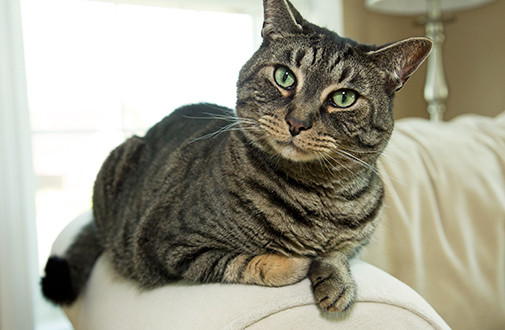 Two cats, one ginger and one tabby, sitting side-by-side looking attentively to the left, symbolizing general cat care and companionship.
Two cats, one ginger and one tabby, sitting side-by-side looking attentively to the left, symbolizing general cat care and companionship.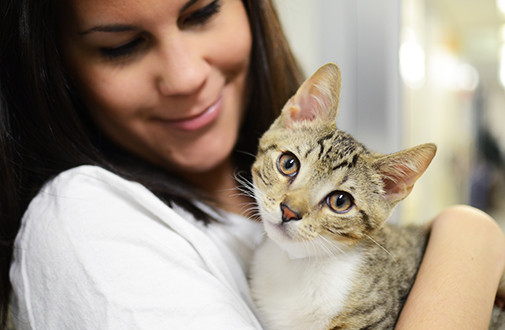 A close-up of a cat's face, focusing on its eyes and whiskers, representing the attentiveness and detail required in proper cat care.
A close-up of a cat's face, focusing on its eyes and whiskers, representing the attentiveness and detail required in proper cat care.
Feeding Your Cat: Nutrition is Key
Proper nutrition is the cornerstone of good cat care. Choosing the right food and establishing healthy eating habits are vital for your cat’s overall well-being.
- High-Quality Cat Food: Opt for premium, brand-name kitten or cat food specifically formulated for their life stage (kitten, adult, senior). These foods are designed to meet the unique nutritional needs of cats.
- Veterinary Guidance: Consult with your veterinarian to determine the best diet for your cat. Factors like age, activity level, breed, and any health conditions will influence their dietary requirements.
- Taurine Importance: Cats require taurine, an essential amino acid that is crucial for maintaining healthy vision and heart function. Reputable cat food brands ensure their formulas contain adequate taurine.
- Fresh Water Daily: Always provide fresh, clean water in a clean bowl. Cats can be sensitive to water quality, so daily washing and refilling of water bowls is essential to encourage hydration.
- Treats in Moderation: While treats can be a fun way to bond with your cat, they should only constitute a small portion of their diet, ideally no more than 5-10%.
- Baby Food Caution: If your cat is unwell or refusing food, plain baby food might seem like an option, but always check labels carefully. Never give baby food containing onion or garlic powder, as these are toxic to cats.
- Monitor Appetite and Health: If you observe signs of anorexia (loss of appetite), diarrhea, vomiting, or lethargy lasting more than 48 hours, seek veterinary attention immediately. These symptoms could indicate an underlying health issue.
- Foods to Avoid: Be aware of human foods that are toxic to cats. Refer to resources like the ASPCA’s People Foods to Avoid Feeding Your Pets page for a comprehensive list. Further information on feline nutrition can be found on their Cat Nutrition Tips page.
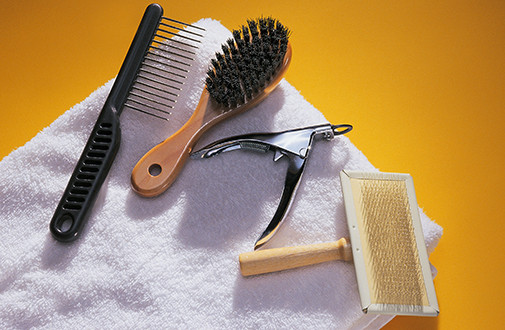 A cat being brushed with a grooming glove, showcasing a loving interaction and the importance of regular grooming in cat care.
A cat being brushed with a grooming glove, showcasing a loving interaction and the importance of regular grooming in cat care.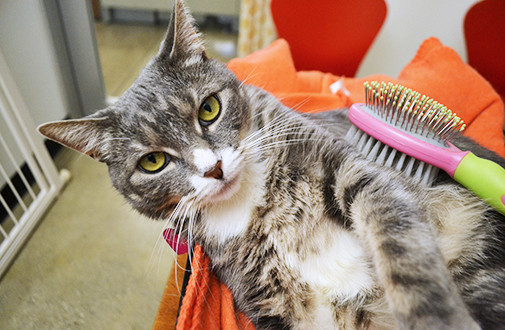 Various cat grooming tools laid out, including brushes and combs, highlighting the different options available for cat grooming and coat maintenance.
Various cat grooming tools laid out, including brushes and combs, highlighting the different options available for cat grooming and coat maintenance.
Grooming Your Cat: Keeping Them Clean and Comfortable
While cats are naturally meticulous groomers, regular grooming by their owners is an important aspect of cat care.
- Regular Brushing: Brushing or combing your cat regularly, especially long-haired breeds, is crucial. Brushes and combs help remove loose hair, prevent matting, and reduce shedding around your home.
- Reduced Hairballs: Frequent brushing also minimizes the amount of hair your cat ingests while self-grooming, which can significantly reduce the incidence of hairballs.
- Bathing – Rarely Necessary: Most cats maintain excellent hygiene and rarely require baths. However, if your cat gets into something messy or has a skin condition, a bath with cat-specific shampoo might be necessary.
- Grooming Tips Resources: For detailed guidance on grooming techniques, explore resources like the ASPCA’s Cat Grooming Tips page.
Handling Your Cat: Safe and Gentle Techniques
Knowing how to handle your cat properly is essential for their safety and your relationship.
- Proper Lifting Technique: To pick up your cat, gently place one hand behind their front legs and the other hand under their hindquarters for support. Lift smoothly and gently.
- Avoid Incorrect Lifting: Never pick up a cat by the scruff of the neck or by their front legs, as this can cause pain and injury.
Housing Your Cat: Creating a Safe and Cozy Home
Providing a safe and comfortable home environment is fundamental to responsible cat care.
- Indoor Home is Best: Cats thrive indoors. Outdoor cats face significantly shorter lifespans and are exposed to numerous dangers.
- Safe Indoor Space: Designate a clean, dry, and quiet space in your home as your cat’s personal haven. This could be a comfortable cat bed, a cozy box lined with a soft blanket or towel.
- Regular Bedding Cleaning: Wash your cat’s bedding regularly to maintain hygiene and prevent the buildup of bacteria.
- Dangers of Outdoor Life: Outdoor cats are at high risk of:
- Trauma from vehicles.
- Fights with other animals (cats, raccoons, dogs).
- Predation by coyotes and other wildlife.
- Infestations of fleas and ticks.
- Contracting infectious diseases like feline leukemia virus (FeLV) and feline immunodeficiency virus (FIV).
Identification for Your Cat: Ensuring Their Safe Return
Proper identification is crucial for both indoor and outdoor cats to ensure their safe return if they ever get lost.
- Safety Collar and ID Tag (Outdoor Cats): If your cat ventures outdoors, they must wear a safety collar with an ID tag. Safety collars with elastic panels or breakaway buckles are designed to release if the collar gets snagged, preventing choking hazards.
- Microchipping (Indoor and Outdoor Cats): For all cats, consider microchipping. A microchip, implanted under the skin, provides permanent identification and significantly increases the chances of reuniting with your lost cat. Ensure your contact information linked to the microchip is always up-to-date.
Litter Box Essentials: Keeping Things Clean and Hygienic
A clean and accessible litter box is non-negotiable for indoor cat care.
- Quiet and Accessible Location: Place the litter box in a quiet, easily accessible location away from high-traffic areas and your cat’s food and water.
- Multiple Litter Boxes in Multi-Level Homes: In multi-story homes, it’s recommended to have at least one litter box per floor to ensure convenient access.
- Minimize Litter Box Relocation: Cats are creatures of habit. Avoid moving the litter box unless absolutely necessary. If you must relocate it, do so gradually, moving it just a few inches each day.
- Daily Scooping: Scoop solid waste from the litter box at least once daily to maintain cleanliness and odor control.
- Weekly Deep Cleaning: At least once a week, completely empty the litter box, wash it with mild detergent and water (avoid harsh chemicals), and refill with fresh litter. Clumping litter may allow for less frequent full changes but still requires regular scooping.
- Avoid Harsh Cleaners and Scents: Do not use ammonia-based cleaners, deodorants, or scented litter, especially lemon-scented products, as these can be offensive to cats and deter them from using the box.
- Litter Box Avoidance Issues: If your cat suddenly stops using their litter box, consult your veterinarian. Litter box avoidance can sometimes be a sign of a medical condition requiring treatment, such as a urinary tract infection. For further insights, refer to the ASPCA’s Litter Box Problems page.
 A cat using a scratching post, demonstrating a natural scratching behavior and the importance of providing appropriate scratching outlets in cat care.
A cat using a scratching post, demonstrating a natural scratching behavior and the importance of providing appropriate scratching outlets in cat care.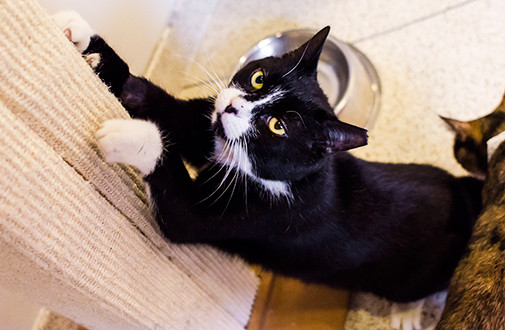 Various scratching posts and pads, showcasing different options for cat scratching and furniture protection in a cat-friendly home.
Various scratching posts and pads, showcasing different options for cat scratching and furniture protection in a cat-friendly home.
Scratching Needs: Providing Appropriate Outlets
Scratching is a natural and essential behavior for cats. Providing appropriate scratching outlets is a key aspect of responsible cat care.
- Natural Scratching Instinct: Cats scratch to remove the old outer layer of their nails, revealing sharp, new claws underneath. Scratching also helps them stretch their muscles and mark their territory.
- Nail Trimming: Trim your cat’s nails every two to three weeks to keep them blunt and minimize potential damage to furniture and skin.
- Scratching Posts and Pads: Provide your cat with sturdy scratching posts that are at least three feet tall, stable, and covered in rough, appealing materials like sisal, burlap, or tree bark. Many cats also enjoy scratching pads in various textures and shapes.
Cat Health: Regular Vet Visits and Preventative Care
Proactive healthcare is paramount for ensuring your cat’s long-term well-being.
- Annual Veterinary Checkups: Schedule annual veterinary examinations for your cat, even if they seem healthy. These checkups include vaccinations and allow your veterinarian to detect potential health issues early.
- Prompt Veterinary Care for Illness or Injury: Seek veterinary attention immediately if your cat shows signs of illness or injury. Don’t delay seeking professional help when your cat is unwell.
Medicines and Poisons: Protecting Your Cat from Harm
Protecting your cat from toxins and administering medication safely are crucial aspects of cat care.
- Veterinarian-Prescribed Medications Only: Never administer any medication to your cat that has not been prescribed by a veterinarian. Human medications can be harmful or fatal to cats.
- Suspected Poisoning – Immediate Action: If you suspect your cat has ingested a poisonous substance, contact your veterinarian or the ASPCA Animal Poison Control Center immediately for 24/7 assistance at (888) 426-4435.
Spaying and Neutering: Responsible Pet Ownership
Spaying or neutering your cat is a responsible and beneficial aspect of cat care.
- Recommended Age: Have female cats spayed and male cats neutered by five months of age to prevent unwanted litters and offer various health and behavioral benefits.
- Learn More about Spay/Neuter: Visit the ASPCA’s Spay/Neuter Your Pet page for comprehensive information on the benefits and procedures.
Vaccinations for Cats: Protecting Their Health
Vaccinations are a cornerstone of preventative cat care, protecting your feline from serious and potentially fatal diseases.
- Veterinary Vaccination Recommendations: Your veterinarian will tailor a vaccination schedule based on your cat’s age, lifestyle, health status, and risk factors.
- Vaccination Information Resources: Explore the ASPCA’s Pet Vaccinations page for detailed information about common cat vaccinations and their importance.
Cat Supply Checklist: Everything Your New Cat Needs
Being prepared with the right supplies will make welcoming your new cat and providing excellent cat care much easier. Here’s a checklist of essential items:
- Premium-brand cat food
- Food dish
- Water bowl
- Interactive toys for play and enrichment
- Brush
- Comb
- Safety cat collar with ID tag
- Scratching post or scratching pad
- Litter box and litter
- Cat carrier for safe transport
- Cat bed or box with a warm blanket or towel
By providing proper cat care, you’re not just meeting your cat’s basic needs; you’re building a loving bond and ensuring they thrive in your home for many years to come. Remember, responsible pet ownership is a commitment to providing a lifetime of love, care, and attention to your feline companion.

